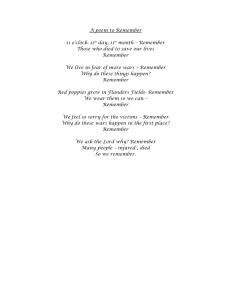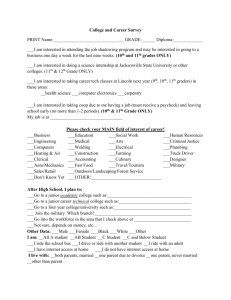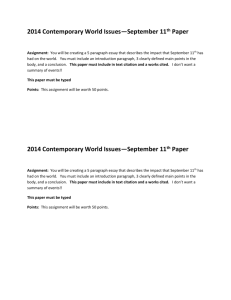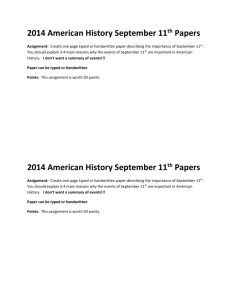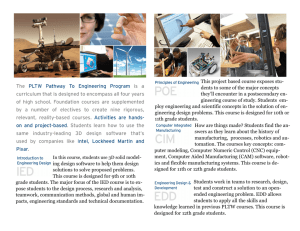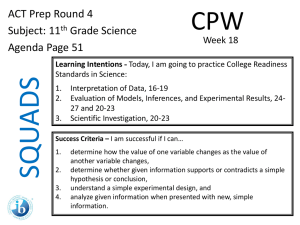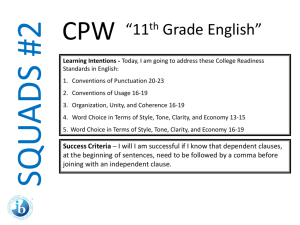Reason's Model - RAeS Human Factors Group
advertisement
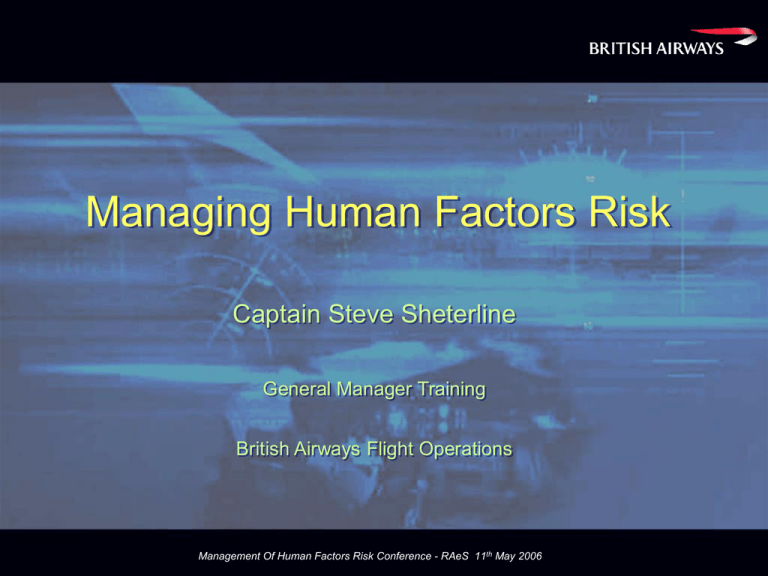
Managing Human Factors Risk Captain Steve Sheterline General Manager Training British Airways Flight Operations Management Of Human Factors Risk Conference - RAeS 11th May 2006 Overview What is Risk Management? How do we manage risk in Flight Operations? Safety Culture Management Recognition Tools Operational Mitigation Tools Training/Feedback Management Of Human Factors Risk Conference - RAeS 11th May 2006 Safety is No Accident So in a safety critical business………. ………..how do we manage the risks? Management Of Human Factors Risk Conference - RAeS 11th May 2006 Effective Risk Management Organisation Procedures/Technical Training Data Management Of Human Factors Risk Conference - RAeS 11th May 2006 Layered Defences Safety Threats Flying Ops Management Of Human Factors Risk Conference - RAeS 11th May 2006 Layered Defences Safety Threats Safety Culture SOPs Technical Training Flying Ops Management Of Human Factors Risk Conference - RAeS 11th May 2006 Layered Defences Safety Threats Erosion Flying Ops Management Of Human Factors Risk Conference - RAeS 11th May 2006 Layered Defences Safety Threats Erosion Flying Ops Management Of Human Factors Risk Conference - RAeS 11th May 2006 Layered Defences Safety Threats Erosion Flying Ops Management Of Human Factors Risk Conference - RAeS 11th May 2006 Layered Defences Safety Threats Erosion Flying Ops Management Of Human Factors Risk Conference - RAeS 11th May 2006 Layered Defences Ineffective Safety Threats Possible ACCIDENT Flying Ops Management Of Human Factors Risk Conference - RAeS 11th May 2006 Incident / Event data life cycle Safety Support Feedback Safety Groups BSRC FSB FOSG FOPG Flying Ops Feedback SAFETY DATA Flt Ops Safety Unit FOSU Safety Services Analyse Data - Assess Risk Management Of Human Factors Risk Conference - RAeS 11th May 2006 Organisation – Key Ingredients Strong Safety Culture No Blame Open Reporting Management Of Human Factors Risk Conference - RAeS 11th May 2006 Procedures Designed around TEM Easily Understood Consistently Applied Acknowledge what experts do Management Of Human Factors Risk Conference - RAeS 11th May 2006 Training Blend of Technical and Human Factors HF Common Language Trainer Skills Operational Rigour Management Of Human Factors Risk Conference - RAeS 11th May 2006 Data Air Safety Reports (MOR) SESMA (FDR Data) Incident Analysis (CTA) Risk Assessment (RAT) Management Of Human Factors Risk Conference - RAeS 11th May 2006 Potential Accident Types CFIT Collision – Mid-Air/Ground Loss of Control - Tech / Non Tech Runway Excursion Fire / Smoke/ Fumes Security Management Of Human Factors Risk Conference - RAeS 11th May 2006 Near miss example Normal Touchdown zone (X) with planned roll out X Approx 80 knots passing normal turnoff 35 knots fast Actual Touchdown (X) and rollout X Management Of Human Factors Risk Conference - RAeS 11th May 2006 Incident Analysis HUMAN FACTORS Mindset (Training) Overload (SA) Tunnel vision (SA) Confidence (Training) Management Of Human Factors Risk Conference - RAeS 11th May 2006 Incident debrief methodology Traditional - analytical questioning supported by data (FDR/weather reports/ATC etc) - informs what happened and how - Investigators to establish causal factors Cognitive Task Analysis - informs individual/crew understanding of SOPs, custom and practice (work-arounds), what happened, how it happened and why the crew did what they did - better informs causal factors and remedies Management Of Human Factors Risk Conference - RAeS 11th May 2006 CTA Process – 3 Stages 1. Timeline with Key Events established beforehand 00:00 Start 05:00 Timeline will contain relevant phases, decisions, procedures, checklists etc. 10:00 Finish Q? What is the crew understanding of the procedure? 2. Custom and Practice 00:00 05:00 Start 10:00 Finish Q? What is custom and practice (e.g commonly seen workarounds/ time saving on the line?) 3. Incident Timeline Follow up areas 00:00 05:00 Start What actually happened? Management Of Human Factors Risk Conference - RAeS 11th May 2006 10:00 Finish CTA Output Use output to: Review/modify procedures Review/modify training Develop expertise Management Of Human Factors Risk Conference - RAeS 11th May 2006 CTA Example – Taxi Incident Summary: Aircraft attempted to taxi without flap and with personnel under aircraft 00:00 03:00 Approx Timeline NORMAL PROCEDURE 06:00 Start Procedure Push Back Procedure After Start Check List Taxi Clearance/Taxi CUSTOM & PRACTICE Potential Distractions Time Pressure? Lack of Rigour? Time Pressure? INCIDENT System warning Completed Not actioned No Flap & Personnel still under aircraft Management Of Human Factors Risk Conference - RAeS 11th May 2006 CTA Taxi Incident Outcome Output from taxi incident CTA used to: • Change 2 SOP’s based on Crew feedback • SESMA event for taxy no flap • Check Ride feedback item introduced • Develop generic distraction management training module for Sim Checks (all fleets) Management Of Human Factors Risk Conference - RAeS 11th May 2006 Risk Assessment Tool (RAT) What does it do? ………….and how does it do it? Example Management Of Human Factors Risk Conference - RAeS 11th May 2006 Risk Assessment Tool (RAT) Aircraft does not land gear up “AND” Relationship Gear is selected down Gear system operates successfully Management Of Human Factors Risk Conference - RAeS 11th May 2006 Risk Assessment Tool (RAT) Gear is selected down Pilots remembers to select the gear down Pilots are prompted to select the gear down “OR” Relationship Management Of Human Factors Risk Conference - RAeS 11th May 2006 RAT Example Aircraft does not land gear up Gear is selected down Pilot remembers to select the gear down Procedural selection as part of SOP's Crew monitoring and checklist discipline Pilot is prompted to select the gear down Horn prompt tied to flap/throttle GPWS gear mode Gear system operates sucessfully Normal System works correctly Hydraulic pressure is available Control system sequences correctly Alternate system works correctly Management Of Human Factors Risk Conference - RAeS 11th May 2006 RAT Example Outcome In this case, the previous slide shows that the probability of an aircraft landing with the gear up is approximately once in 100 million flights. Management Of Human Factors Risk Conference - RAeS 11th May 2006 Summary Risk Management – closing thoughts……….. Tools CTA - Cognitive Task Analysis RAT – Risk Assessment Tool Key points 1. Thinking of Safety in a different way 2. Never relax your effort - you are always cutting the grass! Management Of Human Factors Risk Conference - RAeS 11th May 2006 Questions? Management Of Human Factors Risk Conference - RAeS 11th May 2006
